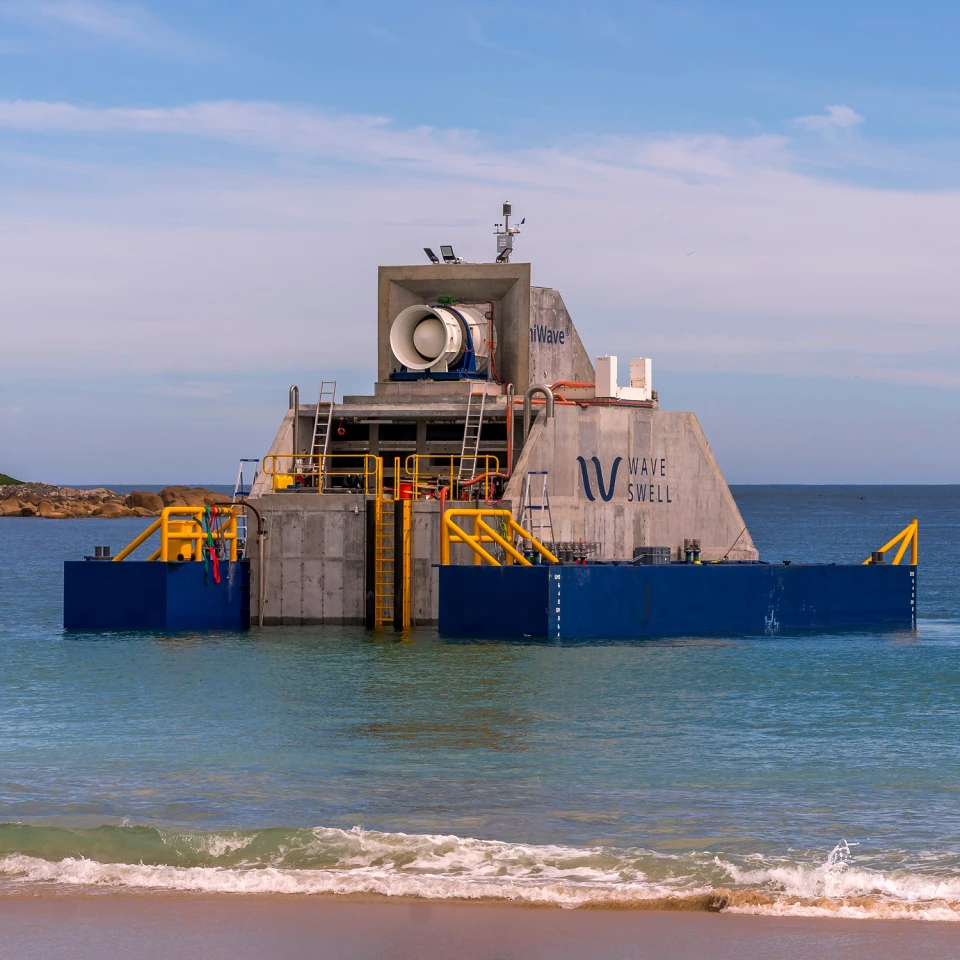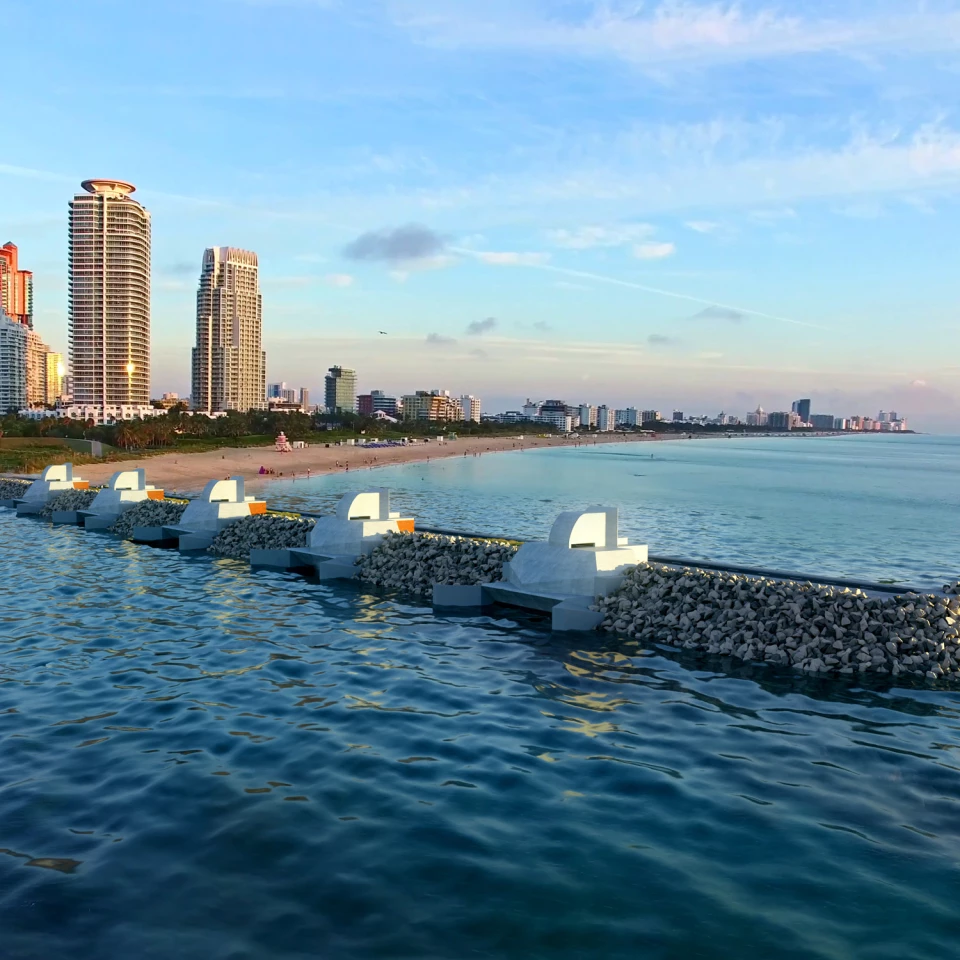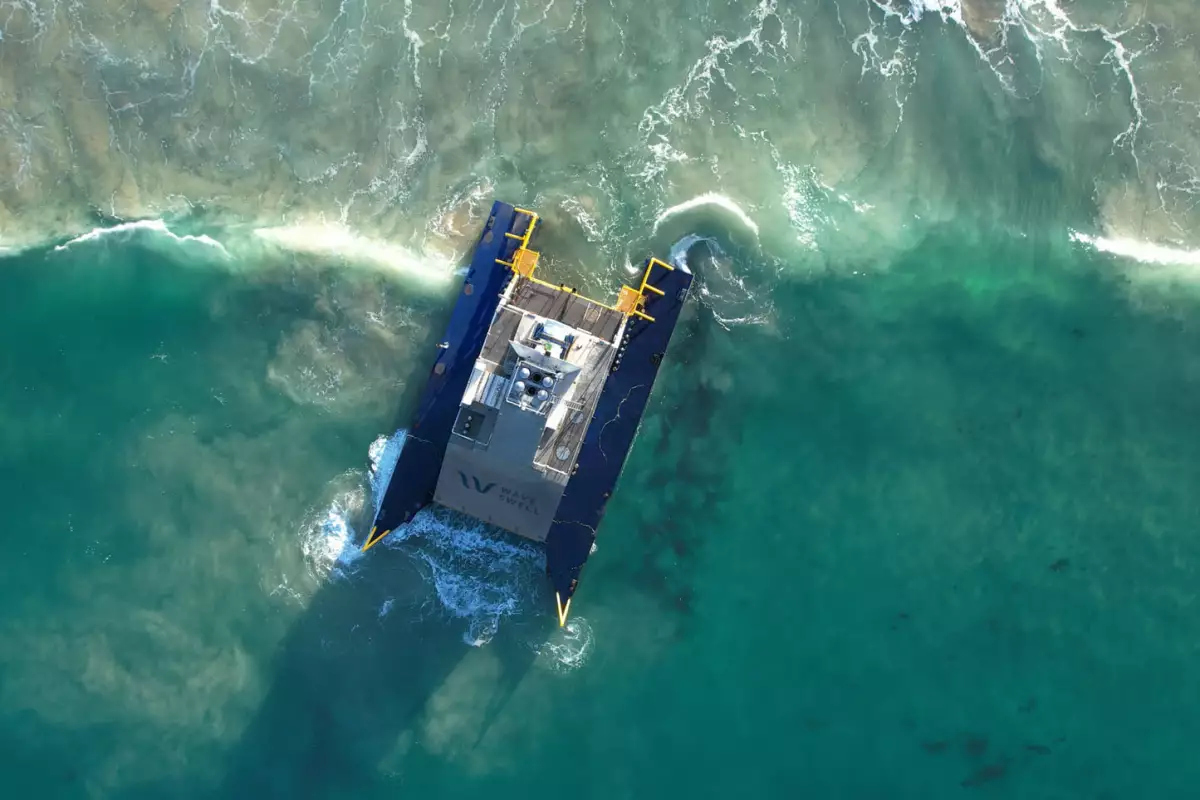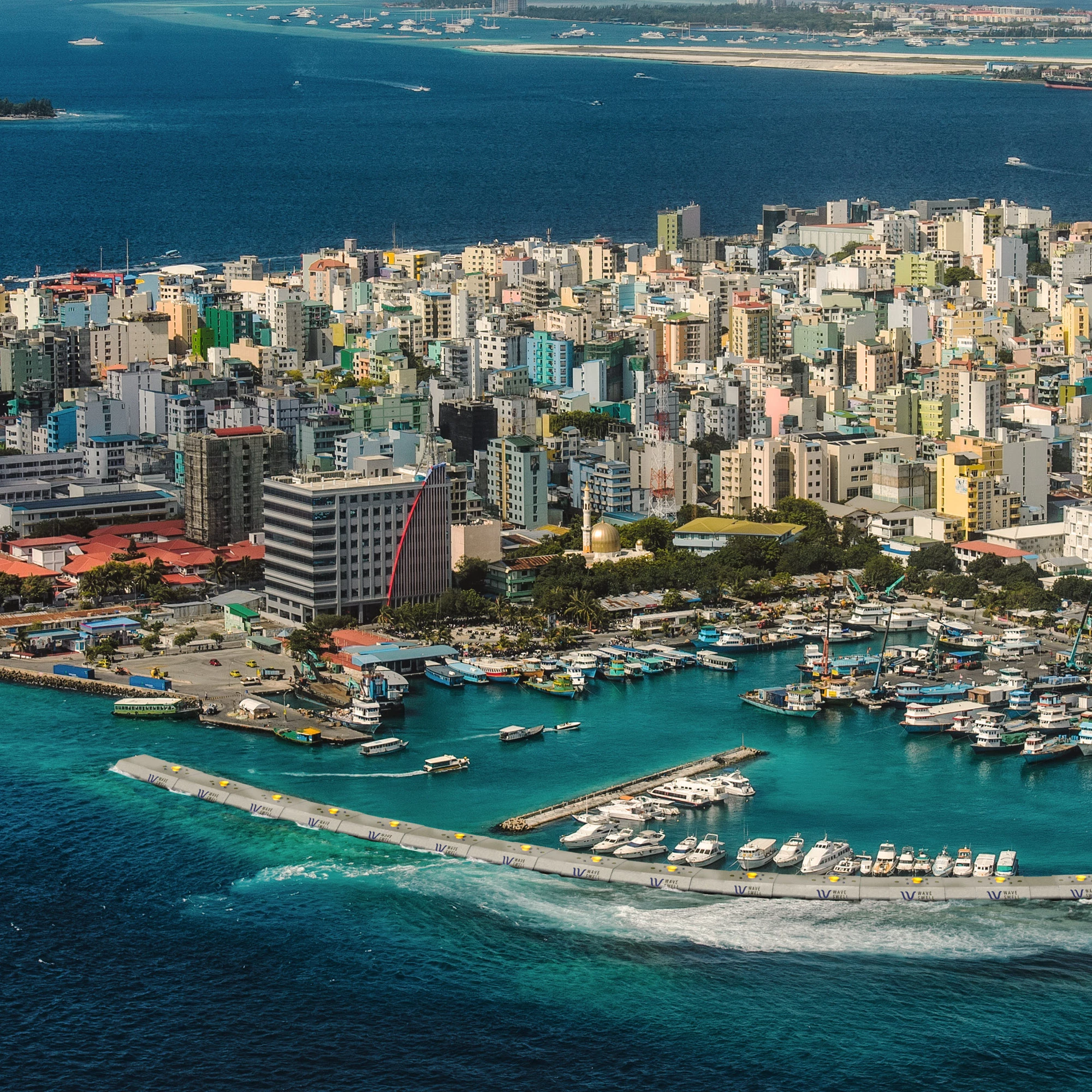Wave Swell Energy's remarkable UniWave 200 is a sea platform that uses an artificial blowhole formation to create air pressure changes that drive a turbine and feed energy back to shore. After a year of testing, the company reports excellent results.
As we've discussed before, the UniWave system is a floatable device that can be towed to any coastal location and connected to the local energy grid. It's designed so that wave swells force water into a specially designed concrete chamber, pressurizing the air in the chamber and forcing it through an outlet valve. Then as the water recedes, it generates a powerful vacuum, which sucks air in through a turbine at the top and generates electricity that's fed into the grid via a cable.
As a result, it draws energy from the entire column of water that enters its chamber, a fact the team says makes it more efficient than wave energy devices that only harvest energy from the surface or the sea floor.

WSE's key innovation here is that one-way generation; other devices that harvest the same effect use bi-directional turbines, requiring the ability to reverse blade pitch or redirect the airflow. WSE says its design allows for far cheaper and simpler turbines, that should also last longer since they're not getting as much salt water splashed through them when a big wave hits. Indeed, all this device's moving parts are above the waterline, a fact that should help extend its service life as well as making it completely harmless to marine life.
Interestingly, the UniWave's design also makes it easy to incorporate into breakwaters and seawalls, where it can take a coastal erosion protection project and turn it into a clean energy source. You can see an animation showing how it works in the video below.
A 200-kW test platform was installed last year off King Island, facing the notoriously rough seas of Bass Strait, which separates the island state of Tasmania from the mainland of Australia. There, it's been contributing reliable clean energy to the island's microgrid around the clock for a full 12 months. The WSE team has made a few live tweaks to the design during operation, improving its performance beyond original expectations.
“We set out to prove that Wave Swell’s wave energy converter technology could supply electricity to a grid in a range of wave conditions, and we have done that,” said WSE CEO Paul Geason in a press release. "One key achievement has been to deliver real-world results in Tasmanian ocean conditions to complement the AMC test modeling. In some instances, the performance of our technology in the ocean has exceeded expectations due to the lessons we’ve learnt through the project, technological improvements and the refinements we have made over the course of the year."
"Our team is excited to have achieved a rate of conversion from wave power to electricity at an average of 45 to 50% in a wide range of wave conditions," he continues. "This is a vast improvement on past devices and shows that the moment has arrived for wave power to sit alongside wind, solar and energy storage as part of a modern energy mix."
We asked Geason over email how much energy the device generated during the trial. "It's important to stress that the demonstration at King Island was not about producing high volumes of electricity," he responds. "Rather, it was to prove the capabilities of our technology in a variety of wave conditions. The results have met and at times exceeded our expectations. As an example, when the unit is generating 40 kW of power in reasonable wave conditions, you could extrapolate the amount of energy to be in the order of 1MWh in a 24 hour period."

The King Island platform will remain in place at least until the end of 2022, and the company is now gearing up to go into production.
"Having proven our device can survive the toughest conditions the Southern Ocean and Bass Strait can throw at it, and deliver grid compliant electricity, our priority now shifts to commercializing the technology," said Gleason. "For Wave Swell this means ensuring the market embraces the WSE technology and units are deployed to deliver utility scale clean electricity to mainland grids around the world.”
Geason tells New Atlas that commercial deployments could vary in size. "The units can scale up from 200 kW," he writes. "Exact size will depend upon the attributes of the wave climate at any particular location. The sweet spot, as you put it, will be site dependent. We're currently engaged with a number of third parties that are seeking to deploy commercial units, and our efforts and resources are focused on further deployments and commercialization of our technology."
See the UniWave 200 test platform running in the video below.
Source: Wave Swell Energy
Editor's note: this piece has been updated on August 2, to include responses from our communications with WSE CEO Paul Gleason.








